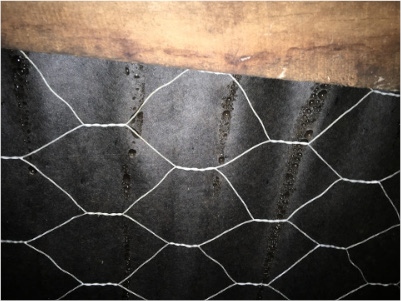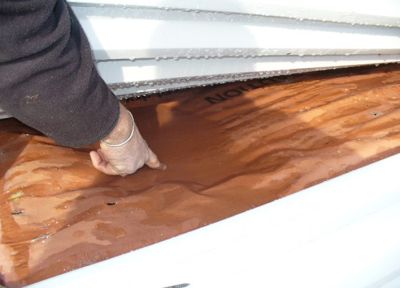Condensation that forms on the cold under-surface of the roof system must be contained until ambient conditions allow it to evaporate. Containment is normally achieved by using an absorbent roofing underlay. It is the role of roofing underlay to absorb moisture temporarily and then release it back into the atmosphere.
A printable bulletin about installing underlay when reroofing is available at: BU01 Double laying of Underlay on Re-roof
Extract:
"...we recommend that no more than a single layer of compliant underlay (laps
excluded) is present on a profiled metal roof."
A common misconception holds that the roofing underlay acts as a drainage plane, channelling condensation from the underside of the metal roof to the gutter. In practice, most of the condensation forms on the underside of the underlay. Although roofing underlays are permeable, they still form a substantial vapour check, and as they are in contact with the roof, they are at a similar temperature. Any condensation that does form on the underside of the roof and falls onto the underlay generally only tracks down the underlay as far as the next purlin, where it is trapped and absorbed by the underlay. Underlay is also affected by holes from roofing fasteners, making it unreliable as a “second roof”.
As it is designed to execute its primary purpose of aiding in the management of internal moisture, underlay should not be used as a compensation for unreliable weatherproofing design and installation
10.11B Condensation Under Roofing Underlay
The presence of pooling condensate on the upper side of a roofing underlay indicates that the absorptive capacity of the underlay has been exceeded. Not only the underlay will be saturated, but so will the ceiling structural members and insulation; mould, corrosion, and decay are inevitable. The cure is to decrease the amount of moisture entering the ceiling cavity or increase ventilation of the ceiling space.
10.11C Chronic Condensation
Underlay also acts as a partial air barrier. (Rigid air barriers are also available.) Water will generally only go where gravity or air pressure takes it. By effectively reducing the space behind cladding, the underlay allows rapid pressure equalisation on each side of the cladding, thereby reducing the ability of water to enter the space.


